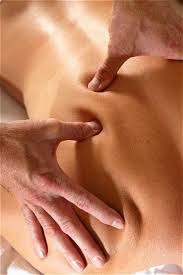First Things First
Easter Sunday, walking at a rapid pace and not being present
in the moment, I misjudged a curb and flew through the air to land full force
in the asphalt road. Arms outstretched to break the landing, I fractured my
upper left arm near the shoulder.
With horizontal and vertical cracks near the top of the
humerus bone, the orthopedists were concerned that the top of the bone would
break off and then things would be very serious. The best course of action was
to immobilize the arm in a sling belted to my waist for one month to give the
bone a chance to heal. They assured me that if I did this, I could expect to
recover 80% of my previous use of that arm.
No one spoke of the trauma’s effect on the rest of my body or
my psyche. No one spoke of the effects of immobilization on all the muscles and
tissues of my arm, shoulder and side body. There were no references to other
health practitioners.
Arm straped to my body, I adjusted computer setups and
sleeping and bathing arrangements and mastered pain management so I could
continue working. I gave up my yoga practice but managed to keep up a walking
routine. With one goal emblazoned on my mind, immobilizing the arm to prevent
displacement of the top of the humerus bone, I ignored the seriousness of what
had happened. In typical grin and bear it fashion, I pretended everything was
as it had been before, except that I was functioning with one arm.
Whole Body Experience
It was not until permission was given to take off the sling,
that I began to realize that such a harsh fall is a total body experience. I
was given a prescription for physical therapy, but my preferred provider was
away getting married. Awaiting her return, I became aware of tension
throughout my body and in my approach to life.
I arranged for a full body massage and was fortunate to be
scheduled with a woman who had a wide repertoire of techniques. She found
myofascial release most effective in getting my body to relax. Under her gentle touch, I felt pain and
tenderness in oh, so many muscles! The trauma of impact came to the surface and all
of the tears that shock had prevented me from shedding began to flow.
After a few massages and physical therapy sessions, I became
conscious of a persistent ache in my chest, near the breastbone. Someone
suggested that a rib might be out of alignment. Bingo! Of course the ribs had
suffered from the impact. So, off I went to a chiropractor. Sure enough, once
he had tapped a rib back into place, the chest pain was gone. He gave me a
prescription for manual therapy – myofascial release – to supplement my
bi-weekly physical therapy sessions.
Use it or lose it is absolutely true. I was in continual
astonishment at the number of muscles and fascia that have to be urged into
functioning again. I am convinced there is a way to immobilize a bone without making
muscles stop their normal functioning. For example, a dissolvable substance
could be injected into bone fractures. As the bone began to heal, new cells
could displace the substance and make it dissolve. Or a net made of dissolvable
threads could be spun around the bone. The threads would be timed to dissolve
as the bone healed. All of this would require microscopic surgery and
unfortunately surgery is very hard on the body. So maybe we’re stuck with the
archaic practice of letting muscles atrophy in order to allow a bone to heal
properly.
Honoring Client Goals
I am blessed with an amazing physical therapist. Right off
the bat, I announced that 80% recovery was not good enough. I needed 95-100%
recovery for my art, gardening, and yoga. Her response was, “OK, let’s see how
far we can go!” Of course, I have to do my part. When she gives me exercises, I
have to be faithful in doing them.
As we came close to the 80% point, I seemed to hit a plateau
and I began to lose momentum with doing my exercises. In order to get moving
again, I suggested that I get back into yoga. Not only did I feel that I had
lost overall flexibility in the six months without yoga, I sensed that I needed
to begin asking the arm to do the things that a fully functioning shoulder
would permit. I also knew I needed fresh motivation toward my goal of complete
recovery.
My physical therapist agreed. She gave me some limits and
clues about when to stop in order to prevent re-injury. Mostly I had to limit
the number of down-dogs I did and stay away from plank pose. Right away yoga
began showing me my limitations. This information guided my therapist in
pinpointing specific muscles that needed support. You have no idea how many
muscles there are underneath the shoulder blade!
My team and I are making strides toward my goal. I hope to complete my healing journey toward the end of December.
Recovery in a Nutshell
If you experience a major challenge such as a broken or
fractured bone, here’s what I recommend.
- Recognize that whatever happened, it is a whole body experience
- Develop a team approach to your recovery
- Find at least one practitioner who will listen to your goals and help you move toward them
- Be diligent in doing your exercises and patient with slow progress
- Work through the plateau
All photos from Google Images








1 comment:
Nice, LiDona. I'll tuck this in my back pocket for use with Any significant trama. Wesley
Post a Comment